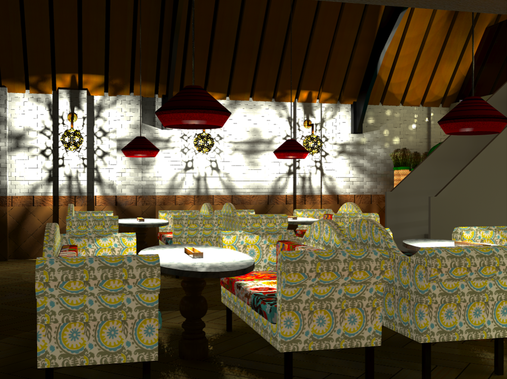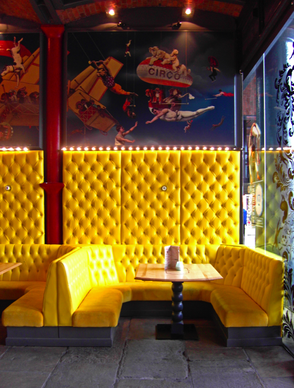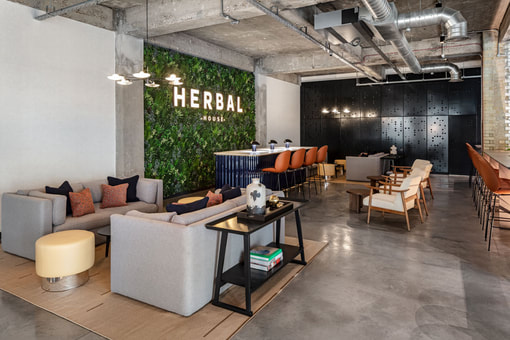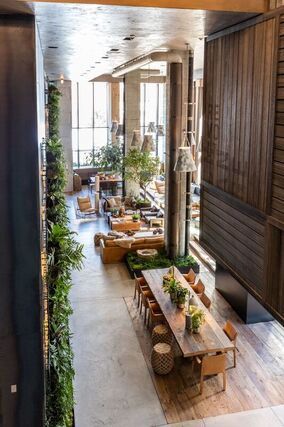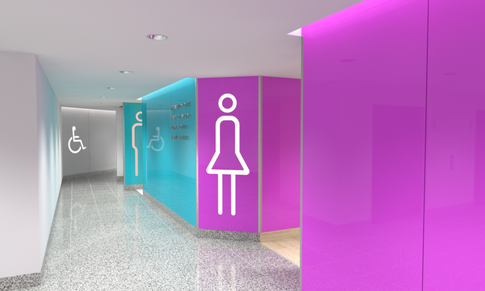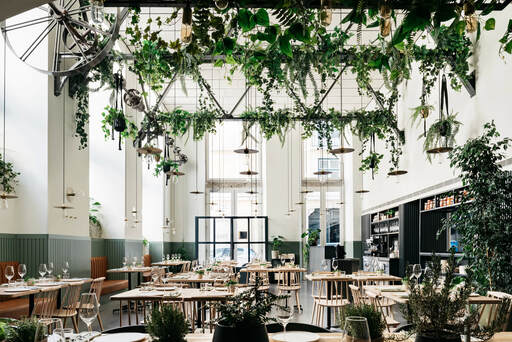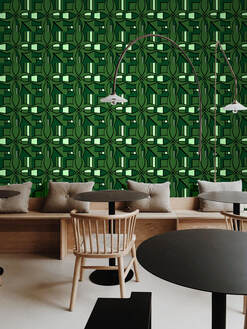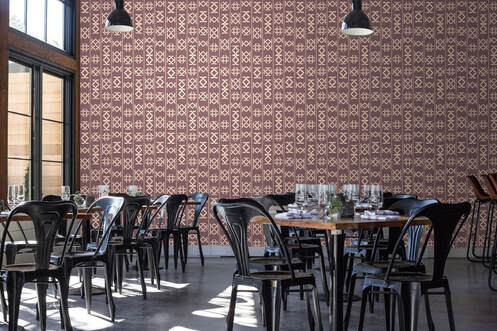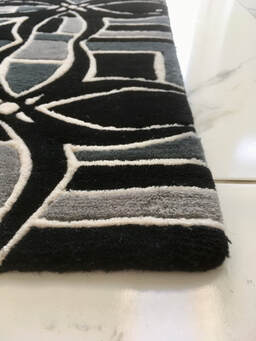|
“A richly designed environment causes more active neurons than a poor environment.” Before we jump into the article I want to provide you with a very quick history of where ‘Neuro Design’ actually came from to help provide you with some context to the true background. The most basic idea of “feeling comfortable or safe” within our surroundings dates waaaay back to caveman days, where the idea of cave dwelling for safety and comfort started. Another branch on the Neuro Design family tree is ‘Evidence Based Design’ (EBD). EBD came about around the 1980’s, and is the process of constructing a building or physical environment based on scientific research to achieve the best possible outcomes. The most recent ancestors of what we now know has involved into Neuro Design, are the “holistic approach” which takes into consideration the user and the immediate environment; and more recently “neuro architecture” which can be defined as any built environment which has been designed whilst following principles derived from neurosciences. Neuro Design takes factors from all of its predecessors into account as part of its own design philosophy, but as you will see its natural progression has evolved into a more advanced and efficient way of designing, specifically targeting the needs and considerations in relation to interior design. Other names have been referred to when it comes to ‘Neuro Design’, but I personally feel these are trend driven terms and Neuro Design, when done the right way, is not a “trend” and should not be considered one. I’ve personally been intuitively designing using the Neuro Design principles since around 2008, before most, and when other design companies where fixated on the “live, work, play” slogan. Neuro Design is the term I used to finally give a name to what makes up part of how I design. What Is The Science Behind Interior Design?Interior design is much more than just choosing beautiful furnishings and decor – it’s about creating spaces that promote health and well-being. Neuro Design is a field of interior design that explores the connection between design and the brain, with the goal of positively impacting neurological and physiological well-being through interior design. Understanding the science behind Neuro Design is crucial for creating spaces that promote happiness and comfort. “Design is a solution to a problem. Good design is a solution to a problem that is also beautiful.” How Do Interiors Affect Mood?: The Impact of Light and Colour on the BrainOne important element in Neuro Design is light and colour. Natural light is essential for promoting relaxation and focus, and can have a significant impact on our mood and energy levels. Artificial lighting can be used to create the appearance of natural light nowadays too with the advances in technology. Artificial lighting, as we know, has its own important role to play when used to provide task lighting, provide colour changes, or highlight certain features. One aspect of artificial lighting that I believe should be made more use of is the play of ‘Light & Shadow’, and creating patterns and shapes with artificial lighting. Additionally, colour schemes can play a huge role in creating a certain ambiance or mood. For example, a study published in the journal "Color Research & Application" found that blue has a calming effect on the brain and promotes tranquility, whist yellow is positively associated with energy, excitement, and warmth (to name just a few). Each colour should be carefully selected when designing interiors partly for its psychological effects and its longer term aesthetics, rather than the short term-ism of choosing the latest “colour of the year”. How Interiors Can Impact Behaviour And The Role of Space in Neuro DesignThe layout and design of a space can have a major impact on social interaction and connection. Open spaces and communal areas, such as open floor plans and communal kitchens, can promote a sense of community and well-being, while closed or cramped spaces can have the opposite effect. Research has shown that access to green spaces and natural light can significantly improve our mood and mental health, whilst the use of softer edges and curves gives a subliminal feeling of safety. One idea within large open spaces is to break up those spaces but without closing them off by using transitions. These transitions can be achieved in many ways such as a transition of levels, a transition of colours/textures, or even by using furniture to create smaller zones with the larger space. A survey by the American Institute of Architects supports this with their findings that the effective layout of open floor plans was one of the top design elements important to the health and well-being of employees within an office environment. Some other examples to touch on are the use of way finding and signage, which can be used for ease of access around a space, and is even become more important in interiors used by people with Alzheimer’s to help them remember their surroundings through the use of different colours textures, and patterns. Another basic example is signage for toilets for example, have you ever saw those huge graphics or neon lighting signs in the shape of the male and female toilet symbols, well these are good examples of designing way finding signs to be beautiful and informative at the same time to make people feel comfortable easily navigating the space they’re in. It’s the use of Neuro Design in the small details too that really pull an interior together. Textures and Materials in Neuro DesignTextures and materials also play a big role in Neuro Design. The way a surface feels can impact our emotions and well-being. For example, natural materials like wood and stone are often associated with warmth and grounding, while smooth surfaces like glass and metal can create a sense of cleanliness and order. Research has shown the impact of textures and materials on the brain and emotions. For example, a study published in the journal "Environment and Behavior" found that natural materials like wood, stone, and plants have a positive effect on mood and stress levels. As sustainability is becoming more important for manufactures of products, furniture, and materials its becoming easier to include sustainability as part of any interior. Not forgetting the inclusion of biophilic elements too such as green/living walls, biophilia used with lighting and also as decorative elements. The clean bright white colour with the touches of wood and greenery in this restaurant is a nice example of a space creating a feeling. How does it make you feel just looking at it? It just looks an uplifting and healthy space doesn’t it. Wallpapers in Neuro Design“New geometrical patterns, intriguing textures, and bold colours, are transforming interior design with a rising focus on better aesthetics, as well as wellbeing.” Wallpapers are a powerful tool in Neuro Design, allowing designers to create a certain look or mood in a space in a way like never before. Whether you want to create a sense of calm, fun, or luxurious sophistication, there’s a wallpaper design that can help achieve that goal. From nature evoking patterns and colours, to bold graphical designs full of visual stimulation, wallpapers offer endless possibilities for interior designers looking to make a big impact, especially now that the advances of wallpaper printing technology and the papers available provide commercial quality papers, some of them with subtle textures to help tell the story of the designs printed on them. Rugs in Neuro DesignRugs are another important aspect of Neuro Design, and can have a big impact on the overall feeling of a space. The new way of combing the softness and texture of rugs for relaxation and comfort, with bold and graphical patterns for their visual and colourful artistic style, for the maximum benefit of the both the user and the rest of the interior space is making the use of designer rugs more desirable than ever. When choosing a rug, it’s important to consider the room’s purpose, the colour scheme, and the overall aesthetic. Rugs that are specifically designed for their simple graphical qualities and use of colour, shape, pattern, and texture are easier to apply to any space due to their timelessness. Data from a study by the Institute for Health and Human Potential on the benefits of rugs in interior design, found that soft, plush surfaces like rugs can improve comfort and reduce stress levels in interior spaces. Add to this their durability, visual quality with colours and patterns, and their acoustical benefits, it sounds like every interior needs to be using rugs or they’re potentially losing out on something! A Wrap Up Of How Interiors Have The Power To Impact Your Brain“Styles come and go. Good design is a language, not a style”. In conclusion, interior design has the power to greatly impact our well-being, both physically and emotionally. Neuro Design (and the science behind it) is specifically geared towards the design of interiors and deeply looks at how the interior environment positively affects the wellbeing of the user through understanding the impact of aspects such as lighting, use of colour, textures/materials, sound and acoustics, psychology, visual & graphical qualities, emotion, biophilia and sustainability, shape/pattern, layout, and more! With the goal being to create an experience where anyone in that interior space feels happy, comfortable, and stimulated within that interior environment which is also well designed and looks great. So, next time you’re planning an interior design project, consider the principles of Neuro Design to create a space that truly promotes happiness and comfort. As an interior design company who naturally uses these design principles, we’re more than happy to aid you in the design of your interior, or provide you with any of our wallpapers or rugs which are also designed with these principles in mind. Just contact us to find out more. Interior design, wallpaper, and rug blog LiverpoolWe Bring Hospitality Interiors To Life! We're a Liverpool based interior design studio who specialise in the design of hospitality interiors. We can provide our interior design service throughout the UK. We also design 'Simple | Bold | Graphical | Timeless' products in the form of commercial quality wallpaper and handmade rugs. Our enriching & healthy wallpapers and rugs can be shipped worldwide and used in ANY kind of interior. All contents of this website belong to Luke Edwards. Copyright © Luke Edwards. All Rights Reserved. Comments are closed.
|

